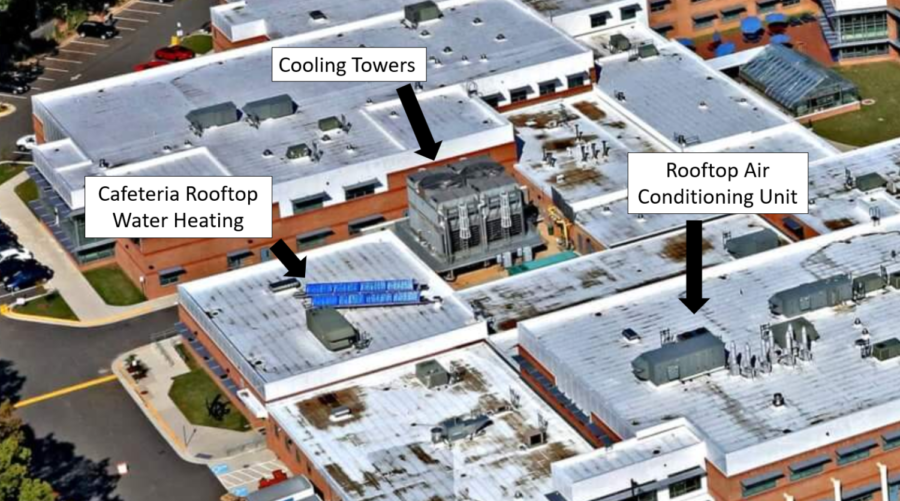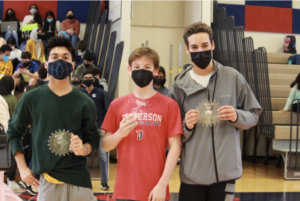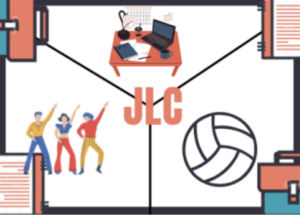Behind the walls of Jefferson
Image from Henley Construction
Jefferson has a variety of heating and cooling equipment, visible from the roof, “We had a renovation starting in 2014, so we have newer technology,” building engineer Jason Carrico said.
April 20, 2022
Steam blowing out from a vent next to Hopper Commons. An obscure room adjacent to the IBET commons entrance. Behind every room that’s a little too hot or a little too cold, there is a network of pipes, vents and other equipment.
Jefferson must provide heat, air conditioning, and lighting to its 384,000 square feet of rooms and hallways, all while saving as much energy as possible. To do this, Jefferson relies on Jason Carrico, the building engineer. Carrico explains that the energy efficiency of the school is possible because of new equipment installed during the 2014-17 renovation.
“Everything is pretty new, and we have a lot of energy recovery. A lot of [other] schools have a chiller, which does the AC for the whole building. We have water source heat pump units and cooling towers instead. We also have solar panels,” Carrico said.
Air Conditioning
Jefferson uses a form of water-mediated air conditioning. During the summer, this allows heat to be dissipated in cooling towers, while in the winter, water is heated by efficient boilers and distributed throughout the school. This leads to heating and cooling energy savings of up to 80% compared to conventional systems.
“Each classroom has its own unit, and it’s connected to a water system. During the summer, classroom units will be blowing out cold air and moving that heat into the water system, so it heats up the water,” Carrico said. “Then the water goes all the way out to the cooling towers, runs down the cooling tower and [this] turns on the fans that cool the water back. The water is sent back to the water loop to [absorb] heat from the building again.”
Cooling towers work through the same principle that cools you down as you step out of the shower: evaporation. Every time water
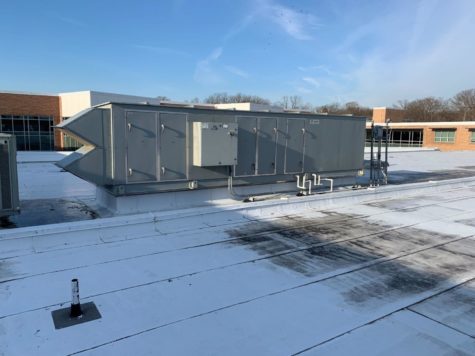
flows through the towers, a bit of it gets evaporated, and in doing so, draws away heat from the building. (Read more about cooling towers here.)
During the winter, the water-mediated system is still used, but it relies on four central, gas-powered boilers for heat.
“It’s the same in the heating season except the cooling tower is replaced with the boilers,” Carrico said. “Instead of rejecting heat into the water system, [classroom units] pick up the heat from the water system and blow it into the classroom. If one room is rejecting heat into the system (cooling), and another room needs to heat, it can use the heat that’s being rejected from one classroom to cool the other.”
Water Heating
Besides our efficient air conditioning system, Jefferson also uses innovative technologies in water heating.
“We have a solar thermal water heater system, so there are solar panels on top of the cafeteria, and there’s a pump that sends solar thermal solution up to those solar panels. The panels heat the water and send it back down,” Carrico said. “The [solar thermal solution] is water mixed with glycol [for greater heat absorbance].”
This heat is later transferred to glycol-free tap water to be distributed throughout the building.
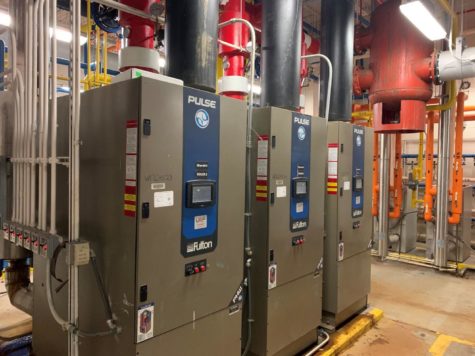
“You have a water tank with [tap] water in it and coils inside. So the hot solar thermal fluid just goes through the coils, heats the water, and then comes back out and goes back up to the roof,” Carrico said. “It helps to save energy by using solar to heat the water, and that water is going to be in the bathrooms.”
A conventional gas-based heating system accompanies solar water heating to ensure water is always heated to the correct temperature.
“Water goes through the water heaters first, and then there’s a controller for the solar [thermal] system down in the boiler room,” Carrico said. “That controller will decide whether to run the solar thermal system, depending on how much sunlight is getting in and what the temperature is in the [solar] panels.”
Electrical
Jefferson also uses solar power for another purpose: electricity generation.
“We also have solar panels on the top of the main office up there. Those are photovoltaic panels, so they make electricity,” Carrico said.
In January 2022, these panels produced 290 kilowatt-hours, or around $34 of electricity. Production can be much higher during spring, summer, and fall months, when days are longer. Since they were installed in March of 2010, the panels have saved $4394.20 of electricity (as of 3/2/2022).
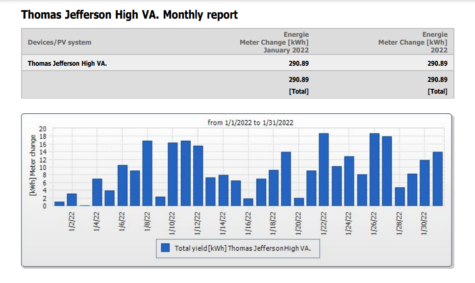
Lighting
As part of its efforts to conserve electricity, Jefferson also uses energy efficient lighting. For example, all of our exterior lighting is LED, using 75% less energy than incandescent counterparts. Dimmable or multi-brightness lights, though often thought of as a convenience feature, lead to energy savings as well.
“In most of the classrooms, you have double ballasts on the switches, so they can be run on dimmer or brighter settings, so the dimmer setting is going to save energy,” Carrico said. “All the classrooms also have motion sensors, so if there’s nobody in the room, it turns all the lights off automatically, saving energy”
Carrico explains that FCPS is expanding these energy efficient developments elsewhere in the county as they continue to renovate schools.
“None of the older schools have [energy efficiency improvement], but the newer schools are getting them, because they’re trying to save energy and upgrade everything,” Carrio said.
Improvements like these also help explain Jefferson’s $90 million renovation costs: in addition to cosmetic and structural upgrades and new laboratory equipment, they often come with monumental overhauls in energy efficiency. As renovations like Jefferson’s continue across the region’s schools, Fairfax County will become more efficient and sustainable.

